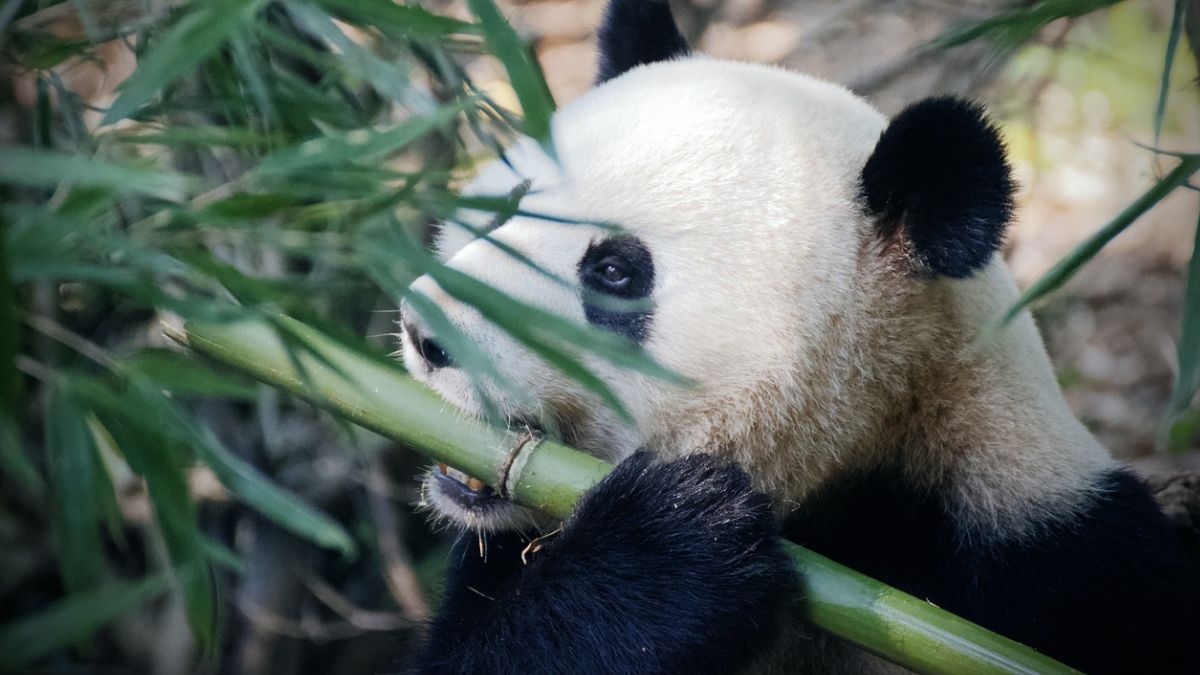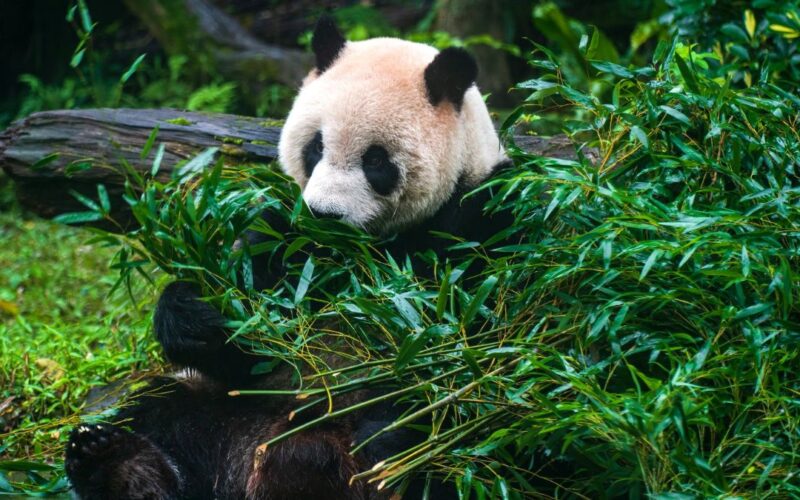The giant panda, with its distinctive black-and-white coat and endearing appearance, is an iconic symbol of wildlife conservation. Native to the mountainous bamboo forests of China, this enigmatic bear captivates hearts worldwide. In this exploration, we delve into 10 intriguing facts about pandas, shedding light on their unique characteristics, conservation challenges, and the efforts to safeguard their future.
Giant Panda Status
The giant panda (Ailuropoda melanoleuca) is classified as an endangered species. Their population is primarily concentrated in the mountain ranges of central China, and conservation initiatives are crucial to ensuring the survival of these beloved bears.
Distinctive Black-and-White Appearance
The striking black-and-white fur of pandas is not just for aesthetic appeal; it serves a purpose. The dark coloration helps pandas blend into their shady and snowy surroundings, while the white fur provides camouflage in the dappled sunlight filtering through the bamboo forest.
Panda Diet: Bamboo Connoisseurs
Pandas are primarily herbivores, and their diet consists almost exclusively of bamboo. Despite being classified as carnivores, their digestive systems have adapted to efficiently process the tough cellulose in bamboo. Pandas can consume large quantities of bamboo daily, showcasing their unique dietary specialization.

Panda’s Peculiar Thumb
Pandas possess an opposable “thumb,” which is actually an extension of the wrist bone. This “thumb” helps them grasp bamboo stalks with remarkable dexterity, facilitating their ability to strip and eat bamboo leaves and stems.
Conservation Challenges
Habitat loss, human encroachment, and low reproductive rates pose significant challenges to panda conservation. The fragmentation of bamboo forests and the encroachment of human settlements further intensify the struggle for the survival of these bears.
Panda Reproduction: Mating Challenges
Panda reproduction is a complex process. Female pandas are fertile for only a few days each year, making successful mating opportunities rare. Additionally, male pandas may face competition, and artificial insemination is often employed to enhance breeding success in captivity.
Cubs: Delicate Beginnings
Panda cubs are born blind, hairless, and completely dependent on their mothers. The early stages of a panda cub’s life are delicate, and mortality rates are relatively high. Mother pandas invest significant time and energy in nurturing their cubs during their formative months.
Panda Playfulness
Despite their solitary nature, pandas exhibit playful behavior, especially when they are young. Play is essential for developing crucial life skills, and pandas engage in activities like climbing trees, rolling down slopes, and mock-fighting with their siblings or playmates.

Symbol of Conservation Success
The giant panda has become a symbol of successful wildlife conservation efforts. With dedicated conservation programs, captive breeding initiatives, and habitat restoration projects, the panda population has shown signs of recovery. The downlisting of the giant panda from “endangered” to “vulnerable” in recent years marks a positive step in conservation.
Efforts in Captivity
Many zoos around the world participate in giant panda conservation through breeding programs and research initiatives. These efforts not only contribute to increasing the panda population but also aid in understanding panda behavior, health, and reproduction, offering valuable insights for their conservation in the wild.
Panda Diplomacy
Pandas play a unique role in diplomatic relations between countries. China has engaged in “panda diplomacy,” gifting these iconic bears to other nations as a gesture of goodwill. The loan of pandas to foreign zoos fosters cultural exchange and international cooperation in conservation efforts.
The giant panda, with its captivating presence and symbolic significance, stands at the intersection of conservation challenges and successes. As efforts continue to protect their habitats, ensure breeding success, and raise awareness about their importance in ecosystems, pandas serve as ambassadors for wildlife conservation. The journey to safeguard the future of these bamboo-eating bears reflects a shared commitment to preserving biodiversity and the delicate balance of our planet.










